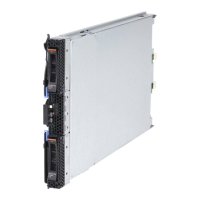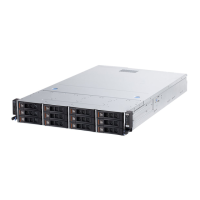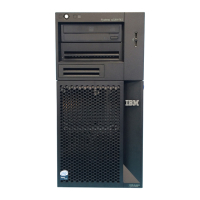Chapter 2. Architecture and technical overview 75
Power Saver Mode
Power Saver Mode reduces the processor frequency and voltage by a fixed amount,
reducing the energy consumption of the system and still delivering predictable
performance. This percentage is predetermined to be within a safe operating limit and is
not user configurable. The server is designed for a fixed frequency drop of 50% from
nominal. Power Saver Mode is not supported during boot or reboot operations, although it
is a persistent condition that is sustained after the boot when the system starts executing
instructions.
Dynamic Power Saver Mode
Dynamic Power Saver Mode varies processor frequency and voltage based on the use of
the POWER7 processors. The user must configure this setting from the BladeCenter
AMM or IBM Director Active Energy Manager. Processor frequency and use are inversely
proportional for most workloads, implying that as the frequency of a processor increases,
its use decreases, given a constant workload. Dynamic Power Saver Mode takes
advantage of this relationship to detect opportunities to save power, based on measured
real-time system use. When a system is idle, the system firmware lowers the frequency
and voltage to Power Saver Mode values. When fully used, the maximum frequency
varies, depending on whether the user favors power savings or system performance. If an
administrator prefers energy savings and a system is fully-used, the system can reduce
the maximum frequency to 95% of nominal values. If performance is favored over energy
consumption, the maximum frequency will be at least 100% of nominal. Dynamic Power
Saver Mode is mutually exclusive with Power Saver mode. Only one of these modes can
be enabled at a given time.
Power capping
Power capping enforces a user-specified limit on power usage. Power capping is not a
power saving mechanism. It enforces power caps by throttling the processors in the
system, degrading performance significantly. The idea of a power cap is to set a limit that
should never be reached but frees up margined power in the data center. The margined
power is the amount of extra power that is allocated to a server during its installation in a
datacenter. It is based on the server environmental specifications that usually are never
reached because server specifications are always based on maximum configurations and
worst case scenarios. The user must set and enable an energy cap from the BladeCenter
AMM or IBM Systems Director Active Energy Manager user interface.
Soft power capping
Soft power capping extends the allowed energy capping range further, beyond a region
that can be guaranteed in all configurations and conditions. If an energy management goal
is to meet a particular consumption limit, soft power capping is the mechanism to use.
Processor Core Nap
The IBM POWER7 processor uses a low-power mode called Nap that stops processor
execution when there is no work to do on that processor core. The latency of exiting Nap
falls within a partition dispatch (context switch) such that the POWER Hypervisor can use
it as a general purpose idle state. When the operating system detects that a processor
thread is idle, it yields control of a hardware thread to the POWER Hypervisor. The
POWER Hypervisor immediately puts the thread into Nap mode. Nap mode allows the
hardware to clock-off most of the circuits inside the processor core. Reducing active
energy consumption by turning off the clocks allows the temperature to fall, which further
reduces leakage (static) power of the circuits causing a cumulative effect. Unlicensed
cores are kept in core Nap until they are licensed and return to core Nap when they are
unlicensed again.

